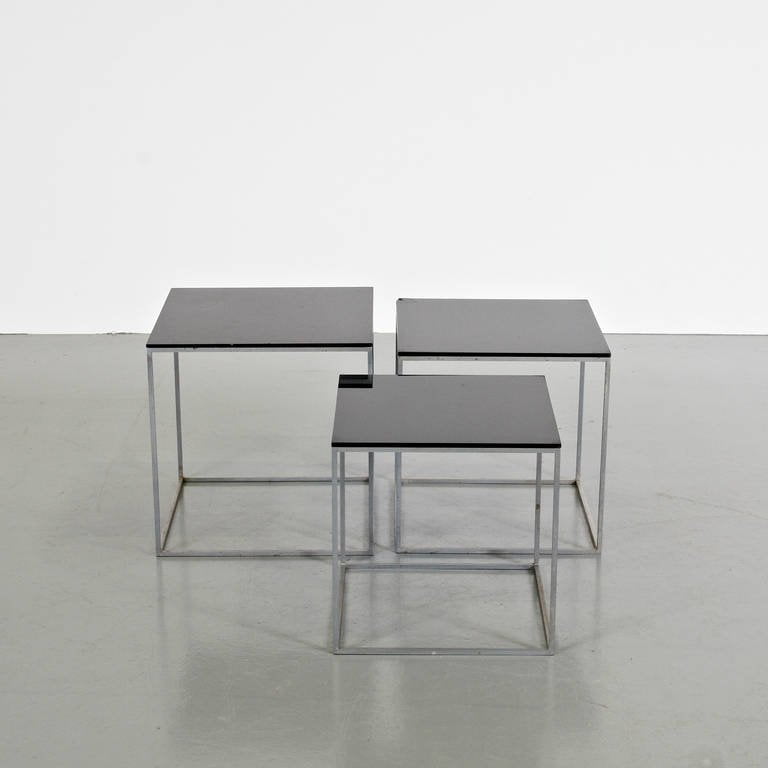
Timeless Elegance: The Design Legacy of Poul Kjærholm
Poul Kjærholm was a Danish designer known for combining modern materials with timeless design. His furniture is celebrated for its clean lines, functional beauty, and elegant simplicity. At Galerie Gaudium, we are proud to offer some of his most iconic pieces.

Who Was Poul Kjærholm?
Born in Denmark in 1929, Kjærholm started as a cabinetmaker before studying at the Danish School of Arts and Crafts. He valued craftsmanship and believed in creating furniture that was both practical and beautiful. Unlike many designers of his time, Kjærholm often worked with steel, combining it with materials like leather, wood, and canvas. He believed in a “less is more” approach, where every detail had a purpose.
Kjærholm’s Iconic Style
Kjærholm’s furniture is designed to be simple, elegant, and versatile. The PK22 chair is a perfect example, with its sleek steel frame and comfortable leather or canvas seat. The PK40 dining table combines a sturdy steel base with a minimalist tabletop, while the PK20 chair is perfect for relaxing in style. The PK33 stool and PK71 nesting tables are compact yet impactful, adding function and beauty to any space.
At Galerie Gaudium, Kjærholm’s designs are always part of our stock. We strive to reflect Kjærholm’s talent for blending form and function in our collection. We are proud to present the iconic PK20 and PK22 chairs as well as the PK7 nesting tables and PK40 dining table. Our latest stock can be found here! Alongside these, other sought-after pieces like the PK24 chaise lounge and PK61 coffee table also feature in his iconic portfolio and we aim to add them to our stock when we find them. These designs are timeless and remain highly popular with collectors and design lovers.



Made to Last
Kjærholm’s furniture has always been made with the highest standards of craftsmanship. His early designs were produced by E. Kold Christensen, a Danish manufacturer known for quality. Today, Republic of Fritz Hansen continues to make his designs, staying true to his original vision. Every piece is made to be as durable as it is beautiful.
Bring Kjærholm into Your Home
Poul Kjærholm’s designs are perfect for anyone looking to add timeless elegance to their home or workspace. At Galerie Gaudium, we have a selection of his pieces in stock, including the PK22 chair, PK40 dining table, and more.



We regularly receive new pieces, including some of Kjærholm’s most iconic designs. Browse our Kjaerholm stock or all our new arrivals to explore our current collection and find the perfect piece to enhance your space.
